The construction industry is one of the nation’s most important prominent socio-economic drivers. It guides the built environment we work and live in. The built environment has a vast and direct impact on our day-to-day life as it is the context for every single human activity.
Technological developments have reshaped how construction projects are handled. New tools and processes have influenced how we design, construct and operate facilities and infrastructures. Data-driven construction approaches and digitalization in construction projects are popular today. They provide the possibilities of wider collaboration not only among the project stakeholders but also as a tool for direct participation for the end users of the facility.
A bilateral relationship between the people working in the construction industry and the local government’s policymakers is crucial to fostering inclusiveness. Creating an inclusive community will aid in promoting unity among the diverse population. It is a key to build a shared vision that hinges on the acceptance of vibrancy and contrast of societies to utilize the strengths of the diverse community.
Digitalization is the new era of empowering people
The COVID-19 pandemic has affected the global economy in profound ways. Nevertheless, if we look at the positive impacts of the pandemic, it has transformed the way an industry works for the better in the long run. At first, changing the work mode from going to the offices to online meetings and working from home seemed challenging to adopt not just for the employee but also for employers. Moreover, the transformation extended beyond the offices into the real world, evolving and digitalizing people’s daily lives.
Inclusive research, development and innovation (RDI) and Digital Living Labs contribute significantly to these dimensions of digitalization. Inclusive RDI in this framework is the key to enable stakeholder participation as partners in all phases of the RDI processes. Additionally, digital living lab(s) provide easy to use and accessible digital (and/or physical) platform(s). These aid the participation and collaboration through participatory research partnership, support co-creation and appropriation of innovations.
A construction project is collaborative in nature as the tasks and activities are divided into different specializations and many organizations. Today, the construction projects and stakeholders incorporate data-driven approaches, tools and activities for the built facility’s design, development, construction, and operation. The centralized data, collaborative network and technology itself and its parallel associates such as artificial intelligence, robotics, and IoT based smart systems, are key target areas of investments in research and development. They support strategic governance and the transition to digital construction methodologies and processes.
Participatory approaches in construction projects
Construction projects and their successful planning and implementation require a wide range of collaboration. Model-based information tools and environments provide direct participation possibilities today.
Such a common platform for information sharing and collaboration is known as Common Data Environment (CDE). CDE is an “agreed source of information for any given project or asset for collecting, managing and disseminating each information container through a managed process” (ISO 19650-1:2019) (Figure 1).
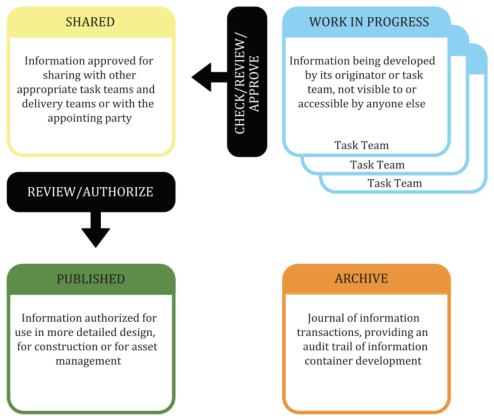
Figure 1: Common Data Environment Concept (ISO 19650-1:2019)
Information content and its development during the various stages of the project needs intensive collaboration between the project stakeholders. Inclusion of the indirect participants like the end users of the facilities as well as residents of the area is important. It provides the opportunities for social inclusion where everyone’s voice is heard. Reciprocity, openness of data and the usefulness of the activity for everyone involved is at the digital environment’s core.
CDE environments enable participation and collection of the opinions of such user groups. It allows the indirect participants to participate in the development actively. Such environments also provide an accessible and easy to use tool to know and understand the project through different 3D model-based environments. It can as well be used to give a real time update about the impact of the project in the day-to-day life of the residents (Figure 2).
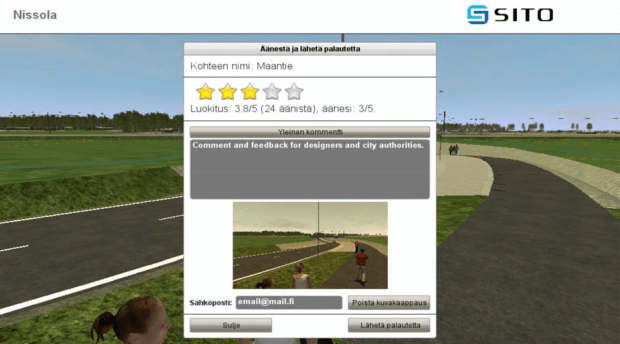
Figure 2. Screenshot of a virtual street model with commenting feature (Jäväjä et al, 2013)
The challenge is, however, to enable stakeholders’ participation throughout the RDI process as equal partners, and not only as informants for the researchers and developers.
Sustainable well-being in the construction projects
The EU diversifies its focus through sustainable development goals and sustainability in the construction industry is one of the key focuses. While the construction industry alone is responsible for 20% of the global energy consumption and approximately one-third of energy-related CO2 emissions; our built environment utilizes the world’s 40% of energy, 50% of natural resources and contributes to 40% of carbon dioxide emissions (WEF, 2016).
Ecological sustainability is considered as the basis for achieving social and economic sustainability goals.
The transformational change for the policy development for an integrated approach to Agenda 2030 demands the conventional growth to be replaced by policies that prioritizes welfare and wellbeing and puts ecological and social objects at the forefront of policy making. While the environmental impacts of the construction industry are huge, socio-cultural impacts are very minorly focused in such developments.
Building Information Modeling (BIM) provides virtual design
Model based tools, applications and processes commonly known today as Building Information Modeling (BIM) provides the ability for virtual design and construction prior to the construction of the actual infrastructure.
BIM provides
- a way to check its constructability aspects prior to the actual construction
- possibilities and tools in making informed decisions for creating a better outcome that can minimize waste of resources, optimize energy and help achieve passive design strategies and achieve sustainable solutions based on the set strategies. These include energy efficient building, comfortable spaces and so on.
While these tools have diversified use for the direct construction project participants, these also support inclusion and participation of the indirect stakeholders and consistently works towards developing innovative solutions to achieve smart living, social wellbeing, and sustainable cities.
An ideal scenario for attaining the projected vision is to utilize digital platforms where stakeholders can collaborate on future interventions to deliver better user experiences based on refined data and through the common data environment that has the potential to be developed as a daily life digilab throughout the life cycle of the built environment (Figure 3).
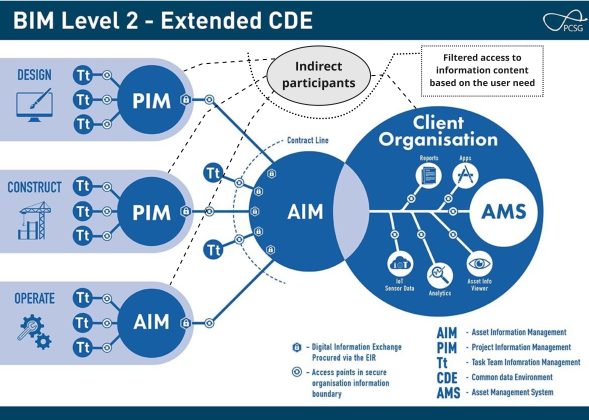
Figure 3: Extended CDE; modified from Adrian Burgess (2016)
Introducing the interactive model through the CDE implementation will help include all the stakeholders from the inception of an idea until its lifecycle that provides the potential in creation of a positive wellbeing of all. Such an inception would help in:
- active participation and inclusion of all the direct and indirect participants
- use digital tools to virtually explore the proposed solutions
- easy collection, review, and dissemination of the information for perceived benefits
- analyze the potential impact of the proposed development on the everyday life activities and in terms of sustainability aspects.
Conclusion: creating a Common Data Environment (CDE) ecosystem
The main challenge of ensuring all people in a society are included can be solved by creating a CDE ecosystem that promotes and sustains participatory co-research, development and innovation activities. Metropolia University of Applied Sciences is currently co-developing a ’Daily Life Digital Lab (DigiLab)’ platform as a part of the inclusive ecosystem concept to support stakeholder engagement and collaboration.
External stakeholders can participate in the different phases of a construction project and contribute to the final product’s concept, design, and implementation.
Moreover, DigiLab will make the information exchange between external and internal stakeholders more accessible by bringing both parties on a common platform. Consequently, internal stakeholders will have the opportunity to evaluate the ideas set forth by external stakeholders, which will have a positive impact on the overall project throughout its lifecycle.
Inclusive and participatory approaches amongst the stakeholders through the digital tools and platforms will enable the participation and engagement to co-create the sustainable built-environment that is accepted by the majority, if not by all.
Authors
Sunil Suwal (MSc. Construction and Real Estate Management) works as a Lecturer at Metropolia University of Applied Sciences.
Manika Bajracharya, Sharmaa Devi Muthusami, Vipul Agrawal are Construction and Real Estate Management professionals, and students of ConREM, Metropolia.
References
- Adrian Burgess (2016), Demystifying the Common Data Environment (pbctoday.co.uk)
- ISO 19650-1:2019, Organization and digitization of information about buildings and civil engineering works, including building information modelling (BIM). Information management using building information modelling. Part 1: Concepts and principles (ISO 19650-1:2018)
- Suwal, S., Laukkanen, M., Jäväjä, P., Häkkinen, T., & Kubicki, S. (2019, August). BIM and Energy Efficiency training requirement for the construction industry. In IOP Conference Series: Earth and Environmental Science (Vol. 297, No. 1, p. 012037). IOP Publishing.
- WEF -World Economic Forum. (2016). Shaping the Future of Construction: A Breakthrough in Mindset and Technology. Cologny, Switzerland: World Economic Forum
- Jäväjä, P., Suwal, S., Porkka, J., & Jung, N. (2013, June). Enhancing customer orientation in construction industry by means of new technology. In 7th Nordic Conference on Construction Economics and Organisation 2013 (pp. 215-226).
About the project Sustainable well-being is created together in participatory RDI partnership
The blog post is related with a RDI project called “HYTKE – Creating wellbeing in daily life through inclusive RDI”. HYTKE project aims to build an inclusive RDI culture across the Metropolia organization and networks, improve access and competence to RDI participation for a wider range of stakeholders and embed participation and accessible technology more comprehensively in RDI projects. Inclusive RDI is at the core of Metropolia’s strategy 2030 and focuses to generate positive societal impact by strengthening its role as an enabler of participation, everyday wellbeing and holistically sustainable RDI culture and solutions with a multidisciplinary approach.

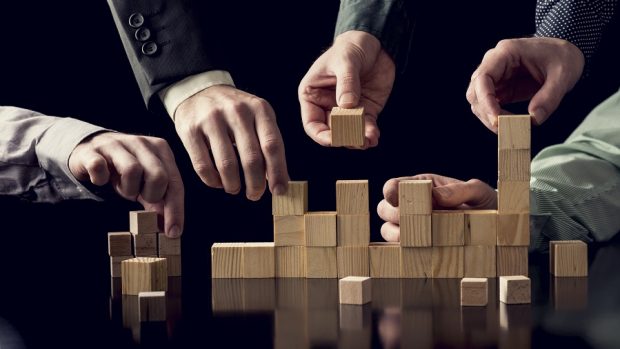
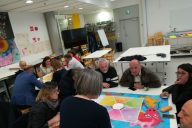
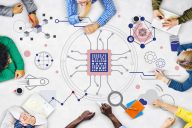





1 Kommentti
[…] artikkeli Sustainable wellbeing through inclusiveness in the construction industry Metropolia Ammattikoulun […]